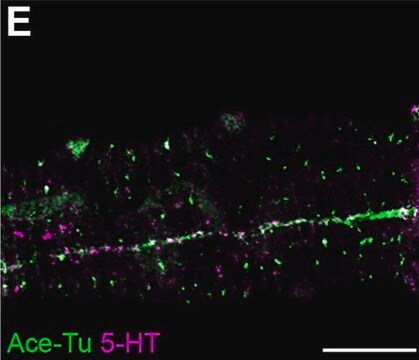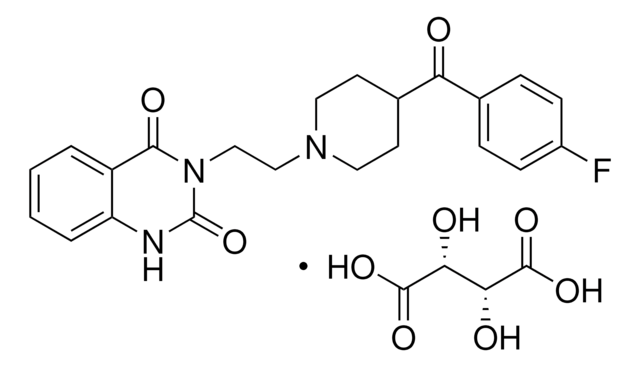P-044
Promethazine hydrochloride
vial of 25 mg, certified reference material, Cerilliant®
Sinonimo/i:
10-[2-(Dimethylamino)propyl]phenothiazine hydrochloride
About This Item
Prodotti consigliati
Grado
certified reference material
Forma fisica
solid
Caratteristiche
Snap-N-Spike®/Snap-N-Shoot®
Confezionamento
vial of 25 mg
Produttore/marchio commerciale
Cerilliant®
tecniche
gas chromatography (GC): suitable
liquid chromatography (LC): suitable
applicazioni
forensics and toxicology
pharmaceutical (small molecule)
Formato
neat
Temperatura di conservazione
room temp
Stringa SMILE
Cl[H].CC(CN1c2ccccc2Sc3ccccc13)N(C)C
InChI
1S/C17H20N2S.ClH/c1-13(18(2)3)12-19-14-8-4-6-10-16(14)20-17-11-7-5-9-15(17)19;/h4-11,13H,12H2,1-3H3;1H
XXPDBLUZJRXNNZ-UHFFFAOYSA-N
Informazioni sul gene
human ... HRH1(3269)
Cerchi prodotti simili? Visita Guida al confronto tra prodotti
Descrizione generale
Note legali
Avvertenze
Danger
Indicazioni di pericolo
Consigli di prudenza
Classi di pericolo
Acute Tox. 4 Oral - Aquatic Chronic 2 - Eye Dam. 1 - Skin Sens. 1
Codice della classe di stoccaggio
11 - Combustible Solids
Classe di pericolosità dell'acqua (WGK)
WGK 1
Punto d’infiammabilità (°F)
Not applicable
Punto d’infiammabilità (°C)
Not applicable
Certificati d'analisi (COA)
Cerca il Certificati d'analisi (COA) digitando il numero di lotto/batch corrispondente. I numeri di lotto o di batch sono stampati sull'etichetta dei prodotti dopo la parola ‘Lotto’ o ‘Batch’.
Possiedi già questo prodotto?
I documenti relativi ai prodotti acquistati recentemente sono disponibili nell’Archivio dei documenti.
Il team dei nostri ricercatori vanta grande esperienza in tutte le aree della ricerca quali Life Science, scienza dei materiali, sintesi chimica, cromatografia, discipline analitiche, ecc..
Contatta l'Assistenza Tecnica.










